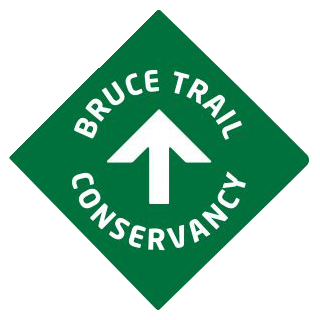Garlic Mustard (Alliaria petiolata) is indigenous to Western Europe and can be found from England to Italy. Its introduction to North America dates from the 1800s, when it was brought by settlers to use for food and medicinal purposes. Since then, Garlic Mustard has spread throughout Southern Ontario and now presents a significant threat to southern Ontario forest ecosystems, as well as residential, public, and agricultural lands.
As an invasive ground cover, Garlic Mustard is amenable to many Ontario habitats. It grows quickly to form dense monocultures and its seeds can be widely dispersed by attaching to people, pets, or wildlife while they traverse trails and natural areas.
What to look for
Garlic Mustard is a trickster: the plant form is very different from the first year to the second of its two-year lifecycle.
In the first year, the plant grows low to the ground, as a circular grouping (rosette) of 3-4 kidney-shaped leaves that are:
- dark-green and remain so through the winter
- wrinkly-looking, with scalloped edges and marked veins
- when crushed, strongly garlic-scented, as its common name suggests
In the second year, by late spring, the plant grows flowering stalks up to one metre tall, with the following distinctive features:
- long, triangular, toothed leaves that alternate along the stem
- smallwhite flowers with 4 petals
- long, thin seed pods, each containing 10-20 small black seeds, dropped through the summer into late fall
Garlic Mustard does have some native and non-native look-alike species. Caution should be taken to differentiate it from native violets, that also grow in rosettes, although their leaves appear less “wrinkly” and are appended on long, hairy stalks.
Impact
As an invasive species, Garlic Mustard is hugely problematic for Ontario’s natural ecosystems, as well as provincial agricultural production.
Garlic Mustard has several growing advantages over native species that effectively reduces local biodiversity. Its seeds may last for up to five years before germination. Once sprouted, seedlings can grow very quickly to outcompete native plants. As the first-year leaves remain over the winter, Garlic Mustard can also start growing earlier in spring. Only one plant is needed to establish a satellite population, eventually infilling space between it and nearby Garlic Mustard populations, crowding out native species and reducing available nutrition to wildlife.
Similar to Invasive Honeysuckles and Common Buckthorn, Garlic Mustard produces chemicals that inhibit the growth of other plants around them. These chemicals also inhibit soil fungi, affecting the ability of forest plants and trees to absorb nutrients; damage that can even persist for years after Garlic Mustard removal. Furthermore, Garlic Mustard changes the rate of leaf litter decay, with far-reaching negative ecological impacts, such as suppression of native plant growth and reduction of habitat for ground-dwelling forest animals.
Garlic Mustard is an agricultural pest, as it hosts several crop viruses. It also affects dairy production, tainting the milk of cows that consume it.
Control
To be effective, a long-term control plan must be implemented: any measures will need to be repeated for several years!
Smaller satellite populations should be prioritized for control, removing outlying plants and keeping large blocks clear from new Garlic Mustard plants seeking establishment. Once this initial work is done, the clear areas can be expanded outward.
Depending on the size and density of infestation, plants can be hand-pulled in early spring, or mowed / cut with flower heads clipped in May. Over-planting with a cover crop or covering with a thick (5 cm+) layer of leaves or mulch should be done immediately, ideally in early spring. Herbicide can also be used for spot application in early spring or late fall. (Please note that anyone using an herbicide must comply with herbicide legislation and follow the label.)
Hikers can also help prevent the spread of garlic mustard to new areas by cleaning their boots, clothing, and pets after each outing to remove any hitch-hiking seeds. Hikers may also have the opportunity to prevent spread by using a boot brush station where available on the Trail.
Help for Landowners
Landowners along the Bruce Trail may be concerned about invasive species such as Garlic Mustard. The Bruce Trail Conservancy (BTC) has a small team of staff ecologists well-versed in local invasive species and forest ecosystems, who offer a Landowner Stewardship Program to aid Trail landowners. Upon request, Conservancy staff will provide expert advice on invasive species and their control. If you need this support, please contact the BTC's Landowner Stewardship Coordinator at 905-529-6821 ext. 232 or landownerstewardship@brucetrail.org.
Pull Party!
Are you interested in joining future “Pull Parties” of like-minded Niagara BTC members who would like to give back to the Trail and our Landowners by helping to control invasive species in Niagara? Any interested members should send an email to aliciaaitchison1@gmail.com for more information.
Resources
This article drew upon Ontario Invasive Plants Council information at: https://www.ontarioinvasiveplants.ca/ and the expertise of Bruce Trail Conservancy ecologists.
As well, check out:
- EDDMapS Ontario (for tracking invasive species):https://www.eddmaps.org/ontario/
- Invasive Species Centre:https://www.invasivespeciescentre.ca/




